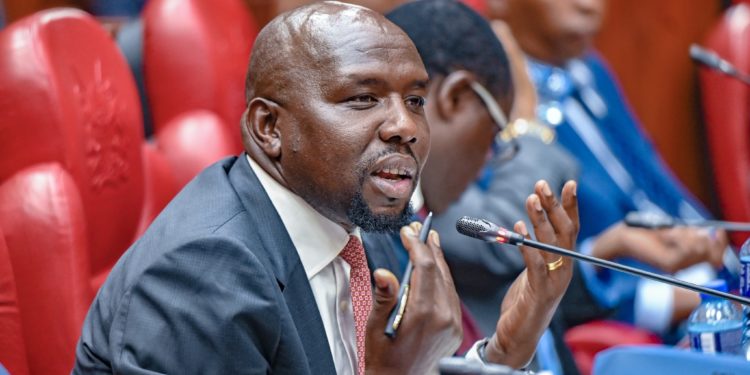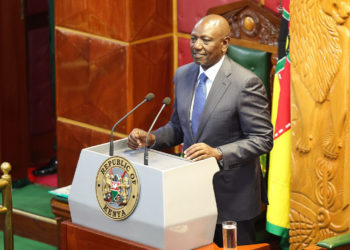The government is weighing an aggressive plan to sharply increase fuel taxes to revive the country’s creaking road network, with a particular focus on rehabilitating thousands of kilometres of neglected rural paved routes at risk of becoming unnavigable.
Appearing before lawmakers on Wednesday, Kipchumba Murkomen, the Cabinet Secretary for Roads and Transport, proposed raising the roads maintenance levy from KES 18 to KES 25 per litre of petrol and diesel – a 40% hike. The move is projected to yield an additional KES 32 billion annually to address a mounting maintenance backlog.
“The gap from 2016 to now has been glaringly evident,” Murkomen told the National Assembly’s Finance Committee. “I am making this proposal with utmost respect…You want people to use good roads. Let’s dedicate the money where it really matters most.”
A substantial portion of the incremental revenue would be ring-fenced to address what the ministry terms “orphaned roads” – approximately 9,000 km of paved rural links neglected due to inadequate funding. The CS proposed amending the Kenya Roads Board Act to allocate 10% of the road levy funds, about KES 10 billion, exclusively to the Kenya Rural Roads Authority (KeRRA) for upkeep.
Currently, KeRRA’s allocation is distributed equally across constituencies based on a political formula, leaving inadequate funds for the costlier paved road maintenance works. “These roads are now having huge potholes, worse than marram roads, because they see zero allocation,” Murkomen lamented, citing examples across counties like Nyandarua, Nakuru and Kajiado.
Road agencies have for years been hamstrung by chronic underfunding, resulting in deferred maintenance programmes. The ministry projects this funding gap will balloon to KES 315 billion over the next five years based on current levies – a shortfall that risks eroding recent investments.
“If roads maintenance has been deferred from one year to the next, the accumulation of unperformed works is called a maintenance backlog,” Murkomen elaborated. “Best practice requires this backlog should be minimal or nil.”
Besides reviving the rural paved network, the CS said the proposal aims to finance an ambitious plan to extend the tarmac network to historically marginalised regions in the north and north-east – dubbing it “the first-ever highway” for areas like Mandera, Wajir and parts of Marsabit County.
However, the proposals drew scepticism from some lawmakers over the potential impact on consumer prices amidst elevated inflation. Others welcomed the opportunity to address long-standing infrastructure deficits that have left some constituencies without a single tarmac road.
“Some of us have remained sceptical to day by divination in every aspect,” said Chesumei Member of Parliament, Paul Biego. “A whole constituency does not have a tarmac road…When will we see results?”
Murkomen assured MPs that the burden would be equitably distributed, with constituencies also getting an increase in annual road allocations from KES 62 million currently to around KES 75 million. He added that the ministry was being “proactive” after years of policy missteps.
“This is something that should have been done 10 years ago,” the CS admitted. “Let’s support each other to ensure this reform that will assist all of us in tackling the problems in the road sector.”
The Finance Committee is expected to deliberate the proposals in the coming days as it finalises the 2024/25 Finance Bill ahead of tabling before the National Assembly.


















